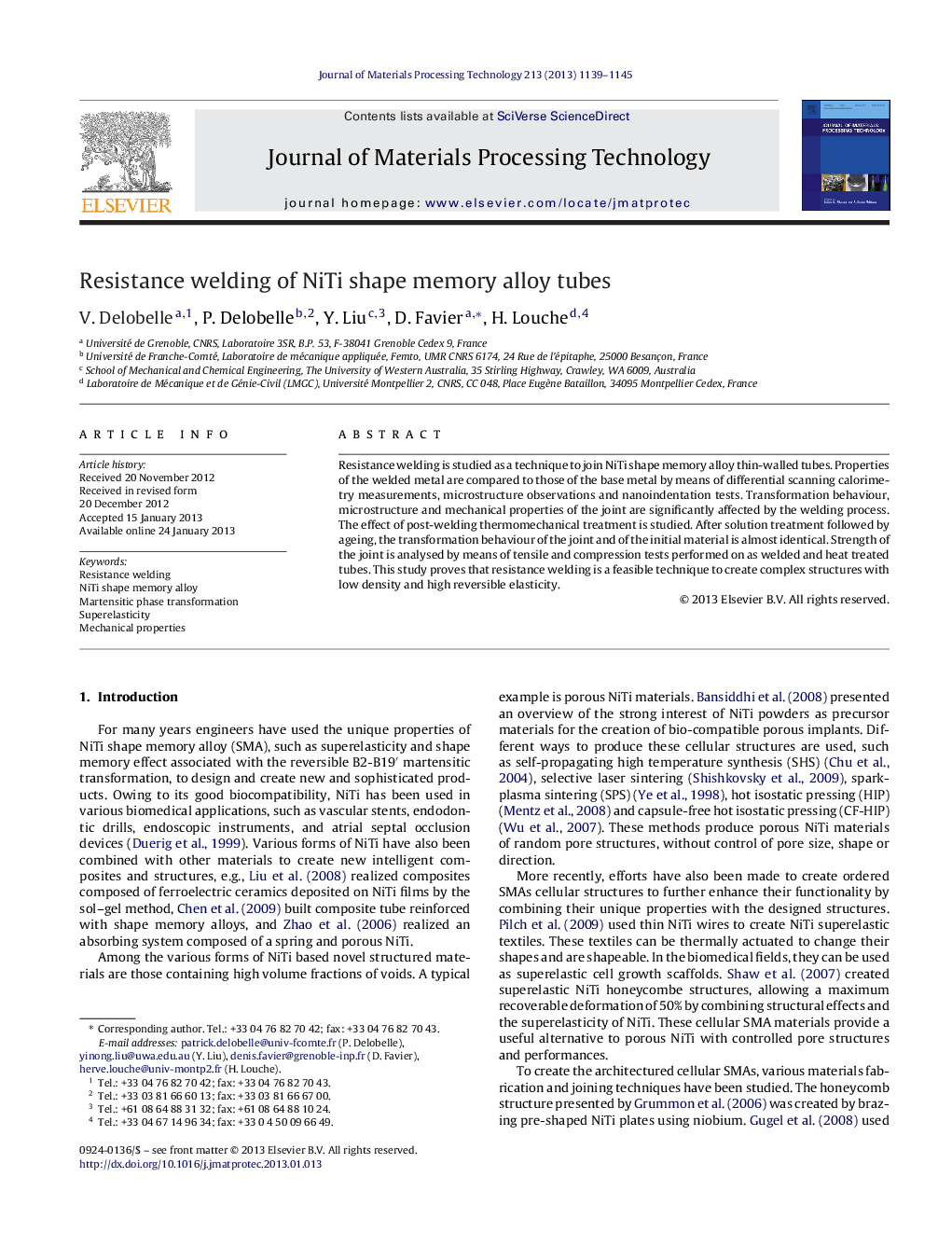| Article ID | Journal | Published Year | Pages | File Type |
|---|---|---|---|---|
| 795882 | Journal of Materials Processing Technology | 2013 | 7 Pages |
Resistance welding is studied as a technique to join NiTi shape memory alloy thin-walled tubes. Properties of the welded metal are compared to those of the base metal by means of differential scanning calorimetry measurements, microstructure observations and nanoindentation tests. Transformation behaviour, microstructure and mechanical properties of the joint are significantly affected by the welding process. The effect of post-welding thermomechanical treatment is studied. After solution treatment followed by ageing, the transformation behaviour of the joint and of the initial material is almost identical. Strength of the joint is analysed by means of tensile and compression tests performed on as welded and heat treated tubes. This study proves that resistance welding is a feasible technique to create complex structures with low density and high reversible elasticity.
► Study of resistance welding as a technique to join NiTi shape memory alloys thin-walled tubes. ► Study of the effect of post-welding thermomechanical treatment. ► Properties studied by DSC, microstructure observations and nanoindentation tests. ► Complex shape memory alloys structures with low density can be created using this technique.
